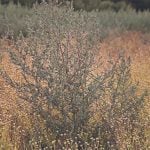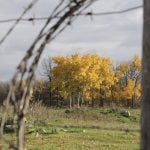Remember the COVID rapid test? That was a point-of-need test designed to find a target and match it to a “binder” which then changes the colour if it’s positive or negative. The same principle is applied to the rapid lateral flow device test for anthrax, Dr. Anatoliy Trokhymchuk explains, which was developed by the U.S. Marines; in Saskatchewan, they use it to test suspicious cattle mortalities.
“It’s good, for its purpose,” says Trokhymchuk, chief scientific officer at Prairie Diagnostic Services in Saskatoon, Sask.
However, with cattle, most of our problems are not so simple. Point-of-care tests have been around for a long time but may not seem practical for a producer.
Read Also

Canadian Beef Check-Off Agency reports on investments and activities
The check-off agency’s work behind the scenes is what ensures cattle check-off dollars are invested wisely, accounted for transparently and deliver measurable value back to producers and importers.
“I think it might be practical for a veterinarian to keep rapid test tools, like the one we use for anthrax, around. But for more complex problems like bovine respiratory disease, the multifactorial and complex nature of the causation prevents us from being able to do something simple.”
The problem
Large-scale feedlots are here to stay to feed a growing and hungry world population. Antibiotics are a necessary tool for animal health, welfare and disease management at the feedlot.
“The trouble with antibiotics is the more you use them, the sooner they stop working,” Trokhymchuk says. “When it stops working, it not only stops working for animals but for humans too.”
The feedlot industry is getting a lot of flak from the World Health Organization over antibiotic uses, especially when it comes to bovine respiratory disease (BRD) prevention and treatment.
“We really need to up our diagnostics, because there is a real risk of losing antibiotics as a valuable tool for both animals and humans if we don’t.”
When deciding to treat an animal for BRD, producers and practitioners are relying on their experience and a gut sense. “This is where we are lacking diagnostic support. They are making decisions based on what they see in front of them, what they have experienced themselves, and what is the current standard of care. But it’s still a guess.”

Working for a diagnostic lab himself, Trokhymchuk and his colleagues realize what is being offered currently is not adequate.
“If people send us a diagnostic request, it takes us a week to get a report back. It’s way too slow to make a treatment decision.” Diagnostics need to align within the decision-making window for the veterinarian and the producer.
Testing new solutions
Fortunately, technological progress is here to help. There is a new tool that was out of reach to animal agriculture even five years ago. DNA sequencing technology is rapidly advancing in utility and accessibility. And thanks to COVID, we now know that PCR-based tests are not enough to tackle a fast- moving infectious disease. Global health care quickly advanced to genotyping, which is only possible when the entire genetic code of the pathogen is read.
“The good news, yes, the devices to read the entire genetic code are here. The biggest challenge though is how do we quickly analyze the mountains of data they produce?”
Computers are advancing and getting more powerful, wireless connection and streaming are everywhere, and there is a way to make large data analysis happen fast using machine learning — one of the examples of artificial intelligence applications.
“As humans, our intellect is not big enough to comprehend so much data.”
When it comes to sequencing DNA code, looking at one pathogen might be comparable to a thousand-page book, but when it comes to sequencing the DNA code of an entire cow that would be about two thousand times bigger. In a cow, not only do you have to sequence the animal’s DNA, but also that of the many “bugs” inside that cow.
“The amount of genetic information inside just one animal is humongous, which is why we need the computing and artificial intelligence to digest it.”
In 2018, a BRD mortality sample arrived at Prairie Diagnostic Services at 11 a.m. At the lab, they were able to extract and prepare DNA from the sample, sequence and analyze it in just a few hours. By 5 p.m. they knew what kind of bacteria they were dealing with and what kind of drugs these bacteria might be resistant to.
“This kind of information is very valuable for making a precise treatment decision,” Trokhymchuk says. “Three days later we confirmed the same information with traditional bacterial culture and susceptibility testing. The method worked.”
Prairie Diagnostic Services asked for and received help from prominent academics, industry and government to build expertise and capacity for genomics — a steep learning curve and an exciting journey they have been on since that early pilot work.
The footprint and cost of equipment now are small enough for a vet clinic or to go in a truck. There is minimal training required. It comes down to taking the sample, following a few processing steps, having the data analysis and reading the information. Vets or producers need to collect enough DNA, from the right kind of sample, for the best chance of answering a clinical question.
For BRD, they have been using nasopharyngeal swabs — similar to a COVID swab. But for cattle, the stick is two feet long and it goes about two-thirds of the way into the nasal cavity. There is a special piece of cotton at the top that is treated so the bugs stick to it. Once it’s taken out it’s placed in a small test tube and processed to get the DNA from the bugs out.
“If dealing with mortality cases, bronchial swabs or lung tissue are good samples too.”
Trokhymchuk says a producer could learn to do the swab but would have to restrain the animal well. A good squeeze chute makes it much easier to properly take this kind of swab, he says.
“In a clinical case, we can help identify the bugs and what drugs they might be resistant to, but it is still up to the producer and their veterinarian to decide what drug makes the most economic and therapeutic sense to use for them. Of course, it helps to know that there are known pathogenic bacteria giving grief to your animals and what resistance genes you have lurking there — you probably don’t want to use the drugs that are less likely to work.”
Since the technology is becoming more available and affordable, folks like Trokhymchuk are ready to start tackling everyday livestock problems. However, price is still a factor. It costs about $1,000 to do a DNA sequencing run with the Oxford Nanopore Technologies equipment they use.
“It’s a lot of money, but 10 years ago, the same work would have cost a couple hundred thousand dollars,” he says. As time passes, and technology continues to evolve, metagenomics will cost even less. “Biotech folks are betting a test like this will cost under $30 in a few years.”
This fall, Trokhymchuk and a few colleagues will be driving around visiting feedlots in a retrofitted ambulance armed with this new technology. It is a proof-of-concept and a demonstration project in collaboration with Telus Agriculture and the Canadian Integrated Program for Antimicrobial Resistance Surveillance. The traditional culture methods will be compared to the new DNA sequencing technology. They want to see how the new technology compares to the old in real life, as well as to learn more about making the new technology practical for daily use in the livestock industry.
“I honestly believe before I retire, we will be at a point similar to the Star Trek tricorder,” he says. “But I don’t subscribe to an idea of sitting and waiting until someone gives it to us. Better we figure it out — it is more fun and would cost less.”
– Jill Burkhardt, her husband Kelly and their three children own and operate a mixed farm near Gwynne, Alta. Originally hailing from Montana, Burkhardt has a range management degree from Montana State University.
















